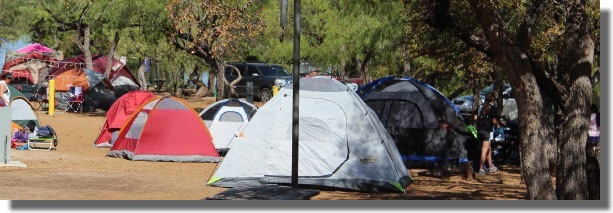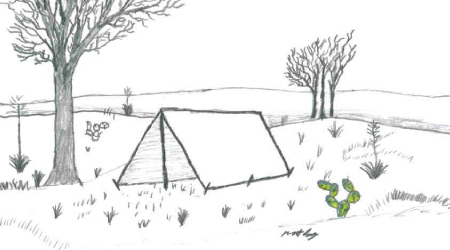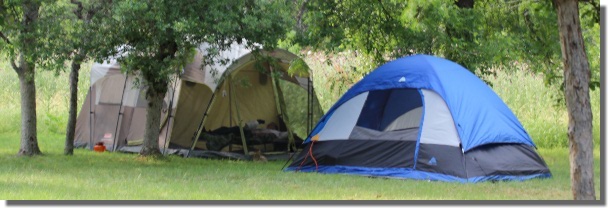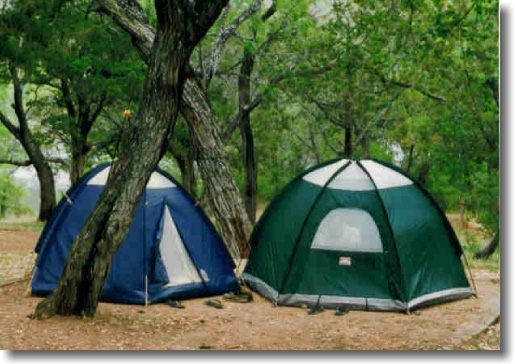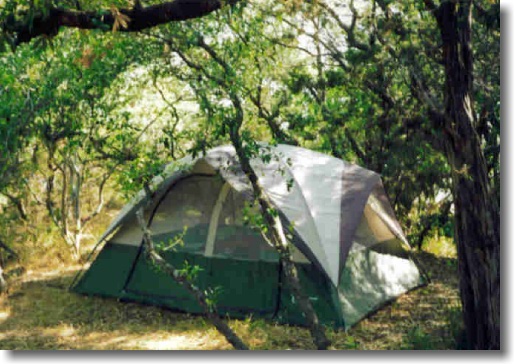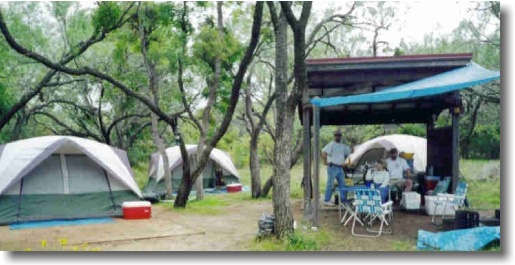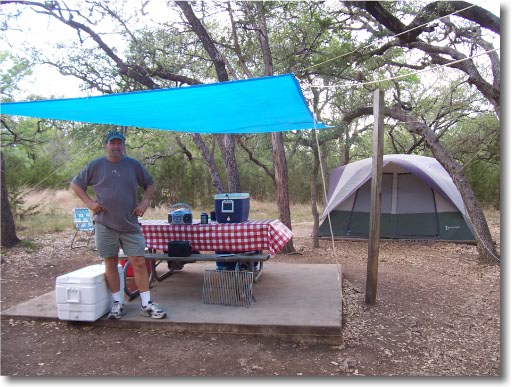Tent Camping
It might seem a little unusual to have an article about tent camping posted on a website called RVWEEKENDS, but tent camping is still a viable camping option, even if you own an RV. Suppose you are RVing at a National Park, for instance, and you are planning to tent camp overnight along the trail - your RV suddenly becomes your base camp.
Many RVers probably began their camping days in tents. Much of the same camping equipment can be transferred to a new RV and continue to be used, even the tents! A couple of years ago, at Disney World's Fort Wilderness Resort, we noticed that kids preferred sleeping in tents, while their parents took shelter in the RVs.
When you are tent camping, you are connected to nature and the outside world full time. Not long ago, while RV camping at a state park during the Spring bird migration, we woke up one morning to chilling temperatures outside. We turned up the heater in our RV and made breakfast without once stepping out the door. At mid morning, I decided to go out and have a look around. I noticed that the tent campers in the park were up, and had fires going and breakfast cooking, while they scanned the trees for birds with their binoculars. No telling how many rare birds they spotted in the trees above our RV.
My First Tent
My first tent, purchased back in the mid 1960s, was an Army Surplus canvas pup tent with an opening on one end and no floor. Even though it was a pup tent, it was not lightweight and didn't fold up very small, thus making it impractical for backpacking.
In the early 70s, I spent many nights in baker and wall tents on Boy Scout camping trips. These tents were made of durable heavy canvas with large poles that were near 2" in diameter. There were no floors or built-in screens - we generally slept on wood-framed canvas cots covered with mosquito netting. Tents have certainly come a long way since then.
You don't have to buy all of your gear on your first camping trip. It is best to buy the basics first, then build your equipment list as you learn about the best gear to buy from experienced campers, or from yourself, as you become a more experienced camper.
The basic tent camping gear starts with a tent and a ground cloth. The ground cloth is to be placed under your tent to protect the bottom from small rocks and sharp objects.
There are many types and styles of tents for camping. Some are fairly large and can sleep several people (like the ones shown above), and some are small and lightweight like the dome tents shown below. This was the second style tent that I personally owned. I had many great camping experiences with my small dome tent. It was perfect for two adults just getting into camping.
There are even smaller tents that are very lightweight and made for serious backpackers. These tents collapse into small packages so that they can easily fit inside a backpack along with the other essential gear.
As my camping needs evolved, so did the size of my tent. The Palomar (a style of tent by Timber Creek) was the perfect size tent for my new raised style bed and air mattress. I wanted a tent that I could stand up in without bending over, and big enough so that I could get out of bed and open the screen door without having to crawl over my sleeping wife.
The Palomar became very popular among my fellow experienced camping friends, and before long we each owned one. This tent is perfect for truck camping, that is, the type of camping where your vehicle isn't far away. Despite its medium to large size, the Palomar can be pitched (set up) by one person.
I still have all of the tents for camping that I have ever owned (except my first pup tent). If you take good care of your camping equipment, it will last you a long time. The key to long tent life is not to pack it up dirty or wet.
If you are on a camping trip and it rains, or there's heavy dew the day you are planning to leave, be sure to let your tent dry as much as possible before you pack it up. But you can't always do that - sometimes the rain just doesn't stop.
The first time we used our brand new Palomar, a thunderstorm rolled in on the last day of camping and forced us to pack it up wet. If you have to pack up your tent in the rain, be sure to spread it out as soon as possible when you get home. A tent packed up wet will mildew and become ruined.
Unpacking Your New Tent
When you buy a new tent, the first thing that you want to do when you take it camping for the first time is tear into the package and get you brand new tent set up as soon as possible so that you can begin admiring it.
As tempting as this is, I highly recommend taking the time to make note of how your tent was rolled and folded immediately after you remove it from the bag so that, when the weekend is over, your can fold your new tent back like it was so it will fit nicely into the bag it came in.
Blue Tarps
Blue plastic tarps are also very handy to have around when tent camping. After the aforementioned thunderstorm forced us inside our tent in the middle of the day, I decided that an alternate shelter made from plastic tarps would be a nice addition to my camping equipment.
Blue plastic tarps don't have to be blue, but it seems like that is the color you always see them. I think I have an army green one somewhere. They have grommets at the corners and along the edges so that you can tie them off to poles or to tree limbs.
Not only do blue plastic tarps provide shelter from the rain, they also provide shade and protection from the sun. I have two or three different sizes of blue tarps and about 100 feet of nylon rope so that I can rig my tarp(s) at any campsite.
Tarps are generally handy to have around when camping. Even if you aren't actively using them, they can be a lifesaver if a sudden storm pops up and you need something to cover your gear.
Canopies
Portable canopies are very popular and have come a long way over the years. There are a variety of styles and sizes to choose from, but 10 x 10 is probably the most common size.
They are a little more expensive, and bulkier and heaver than blue tarps or dining flies, but are easy to set up, since they don't depend on any existing structure (like tree limbs, etc.). They also perform well in moderately high wind situations.
If you don't have to carry a portable canopy too far, they are perfect for providing shelter over a picnic table or other small area.
What Next?
Leave tents for camping and visit rvweekends home



